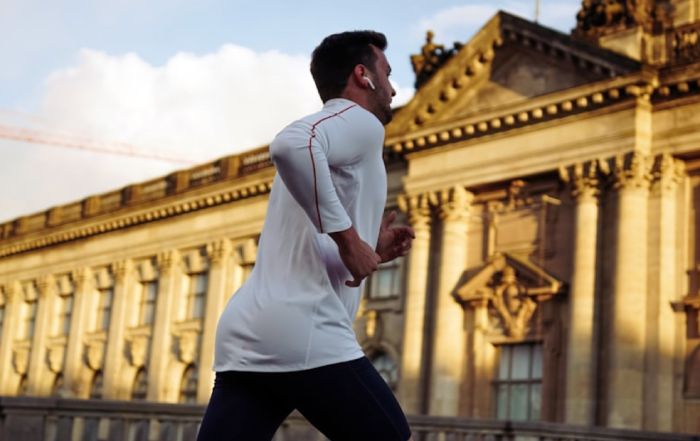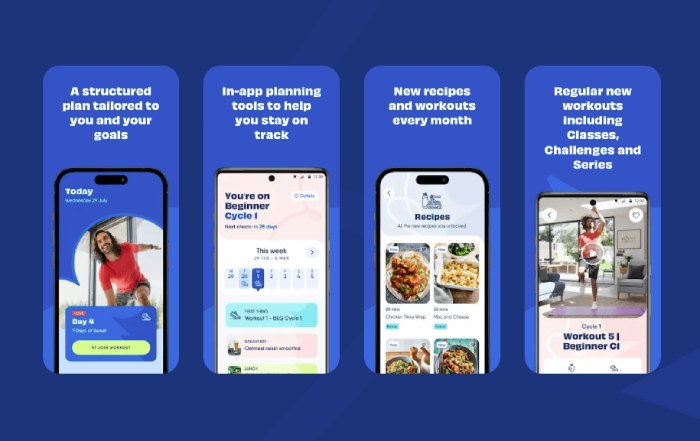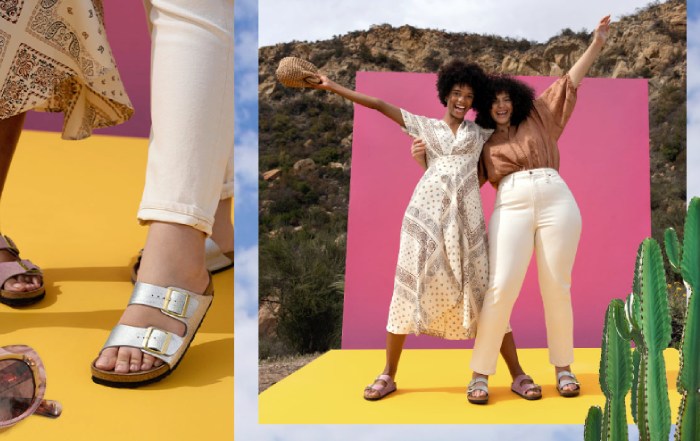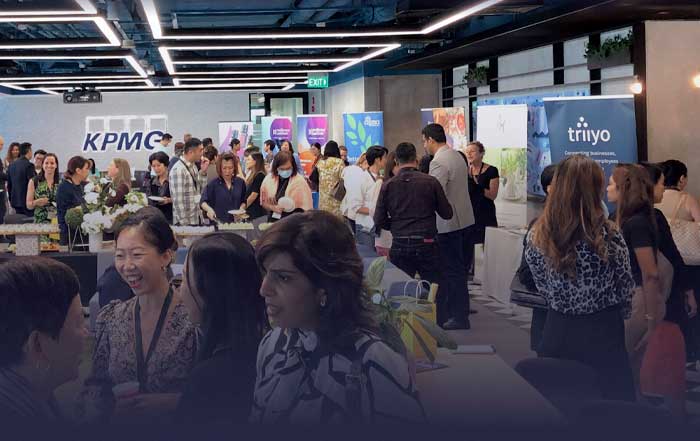The modern fitness movement has evolved far beyond traditional gym memberships and group classes. In 2025, the convergence of smart devices, artificial intelligence, and personalized data analytics has fundamentally transformed how individuals approach health and exercise. The home fitness technology revolution in the United States represents a powerful shift toward accessibility, convenience, and empowerment—where wellness aligns with innovation and daily life seamlessly integrates with movement and mindfulness.
The shift was accelerated by the pandemic years, but it has since matured into a sustained transformation in how people think about fitness and personal health. The days of static workout videos and generic fitness plans are being replaced by dynamic, adaptive ecosystems powered by real-time data. Platforms like Peloton, Tonal, Mirror, Whoop, and Apple Fitness+ have set new standards for immersive, data-driven workouts that bring the experience of a personal trainer or boutique studio right into one’s home. As this movement continues to expand, it reflects not only a trend in physical wellness but a deepening cultural commitment to living healthier, smarter, and more connected lives.
Learn more about the changing landscape of wellness on WellNewTime’s wellness page.
The Evolution of Smart Home Fitness
Home fitness once meant a set of dumbbells and perhaps a yoga mat rolled out in the living room. Today, it represents a connected network of intelligent equipment, wearable devices, and virtual ecosystems designed to support every stage of the fitness journey. The rise of connected platforms has redefined home exercise, integrating advanced motion sensors, haptic feedback, AI-driven performance tracking, and on-demand coaching powered by algorithms that evolve with user progress.
Smart mirrors such as Lululemon Studio Mirror or Fiture combine camera vision, machine learning, and interactive content to assess form and provide instant correction. Systems like Tonal employ electromagnetic resistance technology, replacing bulky weights with digital alternatives capable of adapting to each user’s precise strength profile. The accessibility of AI-guided training, paired with biometric insights from wearables like Garmin, Fitbit, or Oura Ring, allows users to understand their performance, recovery, and readiness levels with unprecedented depth.
The result is a holistic ecosystem where hardware and software coalesce to make home workouts as efficient and data-informed as professional athletic training. As people look for balance in increasingly hybrid lifestyles, this evolution ensures that fitness remains integrated into the rhythm of daily life rather than an additional task on an already demanding schedule. Explore more about fitness trends shaping 2025.
Personalization Through Data and Artificial Intelligence
Perhaps the most transformative element of home fitness technology in 2025 is personalization. Artificial intelligence, combined with biometric data, allows fitness platforms to deliver experiences tailored to each user’s physiology, goals, and preferences. Through predictive algorithms, smart platforms learn how a person’s heart rate variability, sleep quality, and muscle recovery correlate with their performance outcomes, enabling programs that adjust daily for optimal results.
For instance, Whoop and Oura Ring analyze sleep cycles, body temperature, and recovery patterns, offering detailed readiness scores that guide users on whether to push hard or rest. Peloton’s adaptive training programs respond to heart rate zones and historical performance, creating progressive routines that mimic professional coaching. Even general wellness platforms such as Apple Fitness+ now use machine learning to curate entire wellness journeys—combining fitness, mindfulness, and rest into a unified experience.
This level of personalization aligns perfectly with modern expectations of digital health. Just as streaming platforms like Netflix recommend entertainment and Spotify curates music playlists, fitness tech now builds a personalized workout identity for each individual. The integration of biometric feedback ensures that no two workouts are the same, and the user’s evolution becomes a data narrative of continuous improvement. Visit WellNewTime’s innovation section to learn more about how AI is reshaping personal wellness.
The Role of Wearable Devices in Fitness Empowerment
Wearable technology is at the heart of the home fitness revolution. Devices like Apple Watch Ultra, Samsung Galaxy Watch 6, and Fitbit Charge 7 are not just accessories—they are sophisticated health monitors providing 24-hour feedback on heart rate, sleep stages, VO₂ max, stress levels, and more. These wearables transform raw data into actionable insights that guide both exercise intensity and recovery planning.
By connecting directly to fitness apps and smart gym equipment, wearables create a closed-loop ecosystem where every calorie burned, step taken, and heartbeat recorded contributes to a holistic understanding of one’s wellness. In the United States, the adoption of wearables has crossed 65% among adults under 45, driven by the increasing focus on preventive health and the gamification of fitness goals.
Furthermore, companies are merging medical-grade sensors with lifestyle-focused designs. Withings and Garmin are leading this intersection by introducing hybrid wearables capable of electrocardiogram (ECG) readings and blood oxygen (SpO₂) tracking. Meanwhile, fitness data synchronization with telehealth platforms now enables doctors and physiotherapists to monitor rehabilitation progress remotely—a vital advantage in a post-pandemic healthcare environment where remote wellness continues to expand.
For readers interested in the broader context of digital health, visit WellNewTime’s health section.
AI Coaching and the Connected Fitness Ecosystem
Artificial intelligence has evolved from a support tool to a central figure in personal fitness journeys. In the home fitness sector, AI coaches are now capable of delivering guidance comparable to professional trainers by analyzing live data streams and behavioral trends. These systems are no longer limited to exercise routines but extend into wellness recommendations, sleep optimization, and stress management, creating a comprehensive health management environment. Companies like Tempo, Freeletics, and Aviron have integrated AI-driven models capable of interpreting user fatigue, adjusting resistance or rep counts mid-session, and even offering motivational prompts based on emotional tone detected through facial recognition and movement patterns.
In the United States, the adoption of AI coaching is especially prominent among urban professionals seeking high-efficiency routines that adapt to limited schedules. The benefit lies in the reduction of human error—AI never overlooks form corrections, underestimates recovery needs, or repeats ineffective programs. Platforms like Future Fitness even pair human trainers with AI analytics, allowing hybridized programs that combine emotional intelligence and data science. This fusion reflects the future of fitness coaching—personalized, adaptive, and deeply intertwined with digital ecosystems. To explore how innovation shapes everyday wellness experiences, visit WellNewTime’s innovation section.
As AI continues to refine its predictive models, it also democratizes access to professional-level fitness expertise. Whether it’s a college athlete fine-tuning agility or a working parent managing time between meetings, AI-based fitness programs in 2025 deliver precision that was previously accessible only to elite athletes.
🏋️ Home Fitness Technology Evolution
Interactive Timeline: From Basic Equipment to AI-Powered Ecosystems
Traditional Home Fitness
Basic equipment dominated: dumbbells, yoga mats, and static workout videos. Fitness was disconnected from technology with minimal data tracking.
Pandemic Acceleration
COVID-19 forced gym closures, sparking explosive growth in connected platforms like Peloton and Mirror. Home fitness became mainstream necessity.
Wearable Integration
Wearable adoption surged beyond 50% for adults under 45. Devices like Apple Watch, Fitbit, and Whoop became essential fitness companions with 24/7 health monitoring.
Smart Equipment Revolution
Tonal's electromagnetic resistance and Lululemon's smart mirrors introduced motion sensors, haptic feedback, and real-time form correction powered by computer vision.
Social Fitness Networks
Strava reached 100M+ users. Virtual communities on Zwift and Nike Training Club recreated group class energy with leaderboards, challenges, and live events.
VR/AR Immersion
Supernatural VR and FitXR transformed workouts into explorations of virtual landscapes, using motion tracking to measure precision while maintaining high entertainment value.
AI Coaching Dominance
AI coaches analyze live data streams, adjust resistance mid-session, and detect emotional tone through facial recognition. Platforms like Tempo and Freeletics deliver professional-level guidance.
Holistic Integration
Fitness merged with nutrition (MyFitnessPal, Lumen), recovery (Therabody), and mindfulness (Headspace). Platforms now track sleep, stress, heart rate variability, and metabolic data.
Medical-Grade Monitoring
Wearables now feature ECG, SpO₂ tracking, and sync with telehealth platforms. Apple-Stanford collaborations use fitness data for cardiac research and early disease detection.
Market Expansion
Home fitness market projected to exceed $35 billion by 2026. Wearable adoption crosses 65% among U.S. adults under 45, driven by preventive health focus.
Biometric Apparel
Smart clothing with fabric-based sensors (Athos, Hexoskin) track muscle activity and posture, eliminating need for external wearables while maintaining comfort.
Neuroadaptive Training
Brain-computer interfaces measure cognitive states—focus, fatigue, motivation—to optimize performance. Mental readiness directly informs physical output in real-time.
Spatial Computing
Apple Vision Pro and Meta Quest 3 create fully immersive 3D environments that react to movement. Yoga unfolds beside digital waterfalls; HIIT occurs on virtual mountain trails.
Invisible Integration
Biometric sensors integrated into clothing, furniture, or micro-implantable chips. Fitness becomes seamless daily harmony—guided by adaptive AI that understands emotions and life phases.
Connected Communities and the Rise of Virtual Social Motivation
The psychological aspect of fitness has always been linked to social interaction and shared motivation. In the modern era of connected devices, community-driven platforms provide the accountability and camaraderie that sustain long-term commitment. Digital communities formed around Peloton, Zwift, and Nike Training Club illustrate how virtual environments recreate the energy of group classes, allowing users to compete or collaborate from home.
The United States has witnessed a surge in “social fitness,” where challenges, leaderboards, and live-streamed events transform workouts into interactive experiences. Strava, once known primarily as a cycling tracker, now operates as a full-fledged social network where over 100 million users share metrics, encouragement, and achievements daily. This digital socialization addresses one of the primary barriers to fitness adherence—motivation—by fostering human connection even in solitary environments.
Additionally, corporate wellness programs are leveraging these platforms to enhance employee engagement. Large employers such as Microsoft and Salesforce now integrate virtual challenges into their health initiatives, combining wellness incentives with collaboration. In doing so, they align personal well-being with organizational culture—a concept increasingly valued in the post-pandemic workforce. Explore the corporate wellness dimension on WellNewTime’s business section.
The community aspect of fitness technology not only strengthens emotional well-being but also amplifies inclusivity, bridging geographical, cultural, and physical barriers. It ensures that no one is left out of the wellness conversation, whether in a small town in the Midwest or an apartment in downtown Los Angeles.
Immersive Fitness: The Integration of Virtual and Augmented Reality
A defining characteristic of fitness technology in 2025 is the blurring of lines between the physical and virtual worlds. Virtual reality (VR) and augmented reality (AR) now power immersive exercise experiences that engage both mind and body. Platforms like Supernatural VR and FitXR turn workouts into explorations of stunning landscapes, where users strike, jump, and move to rhythmic cues across virtual environments. These experiences use motion tracking to measure precision, speed, and endurance while maintaining high entertainment value.
AR-based systems, such as those developed by Meta and Magic Leap, allow users to overlay real-world workouts with digital elements, transforming ordinary spaces into dynamic training environments. A living room becomes a spin arena, a backyard transforms into a yoga studio on the cliffs of Santorini, and a treadmill session can turn into a virtual marathon through New York City streets.
This gamification of exercise extends beyond novelty—it drives engagement and retention. Users who enjoy their routines are more likely to maintain consistency, which translates into better health outcomes. The combination of immersive content and biofeedback represents the next frontier in human-centered design for wellness technology. For related lifestyle insights, visit WellNewTime’s lifestyle section.
Integrating Mindfulness and Mental Wellness into Fitness Technology
Fitness technology is no longer focused solely on physical metrics. In 2025, holistic health platforms integrate mindfulness, stress reduction, and emotional regulation as integral parts of training programs. Apple Fitness+, for instance, combines meditation and breathing exercises within its fitness sessions, acknowledging the inseparable connection between mental balance and physical performance. Meanwhile, Headspace and Calm collaborate with wearable manufacturers to embed mindfulness reminders and guided meditations into daily fitness routines.
In the United States, where burnout and anxiety remain prevalent among working populations, this integration has become a cornerstone of home fitness ecosystems. Smart wearables now detect stress through physiological signals like elevated heart rate variability or shallow breathing patterns, prompting users with real-time suggestions for grounding techniques. This fusion of data and emotional intelligence helps users maintain equilibrium even during intense training or demanding work schedules.
This holistic approach reflects a cultural transformation toward viewing fitness not as punishment but as self-care. Platforms are adapting to serve this philosophy by blending physical training with guided meditation and restorative practices such as yoga or stretching. Learn more about mindfulness and wellness integration on WellNewTime’s mindfulness page.
The Economic Landscape of Home Fitness in the United States
Beyond its health benefits, home fitness technology represents a thriving segment of the American economy. Analysts estimate the market will surpass $35 billion by 2026, driven by hardware sales, subscription models, and digital wellness services. Companies like Peloton, Hydrow, and Tonal are evolving their business models toward hybrid ecosystems, combining hardware ownership with recurring digital memberships that deliver continuous revenue streams. This “connected fitness economy” is now attracting investors from both the health and technology sectors.
The American consumer’s growing interest in longevity and performance optimization has created demand for products that deliver measurable value. Hardware manufacturers are responding by embedding health sensors directly into devices, transforming exercise equipment into diagnostic tools. Partnerships between fitness brands and healthcare providers—such as Garmin’s collaborations with hospitals and Apple’s partnership with Stanford Medicine—highlight the merging of consumer fitness with formal medical research.
The employment landscape also benefits. The growth of digital fitness has expanded career opportunities for trainers, wellness professionals, and content creators. Virtual fitness instructors, AI wellness data analysts, and online program developers are emerging as new job categories. To explore how these trends shape professional opportunities, visit WellNewTime’s jobs section.
At the same time, as competition intensifies, innovation becomes essential for survival. Companies must continually differentiate through user experience, advanced analytics, or specialized wellness offerings, ensuring the sector remains dynamic and adaptable in the years ahead.
Sustainability and Ethical Design in Fitness Technology
As awareness of climate change deepens, sustainability has become an essential consideration in the design and production of home fitness equipment. American consumers are increasingly demanding products that not only enhance personal wellness but also contribute to global well-being. Fitness technology companies have responded by incorporating eco-friendly materials, modular construction, and energy-efficient systems into their products. Brands such as Peloton, Echelon, and NordicTrack now emphasize recyclable packaging, reduced carbon emissions in manufacturing, and longevity through replaceable components. This evolution reflects a broader movement toward responsible innovation where personal health aligns with planetary health.
The environmental footprint of connected fitness systems extends beyond materials to include digital infrastructure. Cloud servers that power streaming fitness classes and AI analytics require significant energy. As a result, organizations are investing in green data centers and renewable energy sources to offset the growing demand for real-time connectivity. Google Cloud and Amazon Web Services, major partners to several fitness platforms, have pledged carbon-neutral operations by 2030—a critical step in ensuring that wellness technology contributes to a sustainable digital future.
Consumers are also embracing a circular approach to fitness ownership. Subscription models, equipment leasing, and refurbished marketplaces are minimizing waste while maintaining accessibility. Users can trade in outdated smart bikes or treadmills for upgraded versions, reducing landfill accumulation and extending product lifecycles. This closed-loop model mirrors broader trends in sustainability and responsible consumption, ensuring that personal fitness innovation remains environmentally conscious. Readers can explore additional insights about sustainable living on WellNewTime’s environment section.
Inclusivity and Accessibility: Expanding Fitness for All
Inclusivity has emerged as a defining principle in the next generation of fitness technology. In the United States, where diverse populations encompass a wide range of physical abilities, ages, and cultural backgrounds, fitness platforms are prioritizing accessibility as a fundamental design feature. Apple Fitness+ introduced workouts for wheelchair users and individuals with limited mobility, while FitOn and Obé Fitness offer sessions tailored for prenatal and senior audiences. This inclusivity extends beyond body type or physical capability—it includes gender identity, language preferences, and cultural diversity in instructors and content representation.
AI-driven platforms enhance accessibility further by automatically adjusting intensity levels or exercise durations according to user capability. For instance, visual recognition software can assess form and adapt movements for individuals with different limb mobility, while audio guidance supports users with visual impairments. These advancements democratize access to health and wellness, reinforcing the principle that fitness should empower, not exclude.
The inclusion of community-based programs also plays a crucial role. Regional partnerships between fitness tech firms and local health organizations have created outreach initiatives for underserved populations. Through discounted access and community challenges, these programs bridge the digital divide, bringing high-quality wellness experiences to those who might otherwise be excluded due to socioeconomic barriers. For stories celebrating inclusive wellness initiatives, visit WellNewTime’s world section.
The Integration of Nutrition, Recovery, and Lifestyle Data
While exercise remains central to the fitness narrative, the holistic model of 2025 integrates nutrition, recovery, and lifestyle tracking to provide a comprehensive view of well-being. Platforms like MyFitnessPal, Lumen, and Noom collaborate with fitness device manufacturers to synchronize calorie intake, macronutrient ratios, and metabolic data with workout performance. The resulting ecosystem enables users to make informed choices based on physiological needs rather than generalized dietary advice.
Recovery has also become a vital focus area. Therabody and Hyperice have evolved from producing percussive massage tools to developing AI-driven recovery platforms that adapt to muscle strain patterns and recovery timelines. These devices now integrate seamlessly with wearables, offering proactive recommendations such as targeted stretching, hydration goals, or rest days. Learn more about muscle recovery and wellness at WellNewTime’s massage section.
Lifestyle synchronization completes the triad of modern wellness technology. Smart home integrations allow users to control lighting, temperature, and music during workouts for optimal comfort and motivation. Sleep tracking is now interconnected with exercise programs, ensuring that recovery periods are optimized and performance peaks are timed accurately. This multi-dimensional model reflects an evolved understanding of health—where technology enhances not only strength and endurance but balance, rest, and daily energy management.
The Rise of Preventive Health and Fitness-Tech Partnerships
In 2025, the boundary between fitness and healthcare continues to blur. Major fitness brands have entered strategic collaborations with health insurers, research institutions, and hospitals to promote preventive health programs. These initiatives encourage users to maintain regular exercise habits by offering incentives such as reduced insurance premiums or medical monitoring benefits. UnitedHealthcare and Aetna have partnered with wearable manufacturers to reward consistent activity tracking, positioning exercise as a proactive medical investment rather than a leisure pursuit.
Moreover, data collected from fitness devices is increasingly utilized in medical research. The collaboration between Apple and Stanford University in studying cardiac rhythms through Apple Watch has paved the way for further studies in respiratory health, diabetes management, and early disease detection. Fitness platforms now serve as large-scale, anonymized research networks that provide scientists with valuable longitudinal data, accelerating progress in digital medicine. Readers interested in the intersection of health innovation and fitness can explore WellNewTime’s health section.
This integration of medical science and fitness technology represents a new paradigm where health management becomes predictive rather than reactive. Instead of responding to symptoms, technology empowers individuals to recognize early indicators and modify lifestyle patterns before medical intervention becomes necessary.
The Role of Big Tech in Shaping Fitness Futures
The expansion of home fitness technology in the United States is strongly influenced by the strategies of Big Tech companies. Apple, Google, Amazon, and Meta have entered the fitness ecosystem through wearables, smart speakers, cloud analytics, and immersive reality platforms. Each company brings distinct capabilities that reshape consumer expectations.
Apple’s ecosystem leverages its hardware-software integration to create seamless transitions between daily activities and exercise. From monitoring vitals on the Apple Watch to personalized coaching on Fitness+, Apple has positioned itself as a wellness companion embedded in daily life. Google Fit, powered by Wear OS, integrates with Android smartphones and health apps to unify data across platforms. Meanwhile, Amazon Halo blends emotional wellness insights with physical metrics, analyzing tone of voice and movement patterns to promote balance between mind and body.
Meta’s VR fitness expansion through its Quest line has redefined the experiential dimension of workouts, while Samsung Health continues to push interoperability between smart TVs, smartphones, and watches. This competition drives innovation at an unprecedented pace, ensuring that users benefit from increasingly advanced, interconnected ecosystems. Readers can follow updates on global innovation through WellNewTime’s news section.
Privacy, Data Ownership, and the Ethics of Fitness Tracking
As the fitness technology ecosystem expands, so do concerns surrounding privacy and data governance. The collection of biometric and behavioral data introduces ethical considerations regarding ownership, consent, and usage. In 2025, U.S. regulatory frameworks such as HIPAA and the California Consumer Privacy Act (CCPA) have extended to encompass wellness technology, but enforcement and transparency remain complex issues.
Consumers are becoming more aware of the sensitivity of their health data, demanding stronger encryption, anonymization, and data portability options. Fitness platforms must navigate the balance between personalization and privacy, ensuring that users retain control over their information while still benefiting from AI-driven insights. Companies that maintain transparency—clearly outlining how data is stored and shared—are gaining trust and brand loyalty in a competitive marketplace.
Ethical AI development has also emerged as a guiding principle for future growth. Developers now employ bias audits to ensure that algorithms treat all demographic groups equitably and do not reinforce stereotypes or performance disparities. The emphasis is shifting from mere technological capability to responsible, human-centered innovation—a theme central to the wellness philosophy upheld by WellNewTime. Learn more about responsible wellness innovation on WellNewTime’s business section.
Global Influence and Cultural Adaptation of Fitness Technology
The influence of American fitness technology has extended far beyond its domestic market, shaping global standards for wellness innovation and digital health engagement. In 2025, nations across Europe, Asia, and the Pacific are not merely adopting U.S. fitness solutions—they are localizing and expanding upon them. The spread of connected home fitness ecosystems demonstrates how cultural nuances shape consumer behavior, creating a global conversation around personal wellness that blends technology, tradition, and lifestyle.
In the United Kingdom and Germany, the popularity of smart mirrors and connected cycling platforms like Peloton and Zwift aligns with the urban preference for efficiency and high performance. European consumers, however, demand greater environmental accountability, pushing manufacturers to meet strict sustainability regulations such as those outlined in the EU Green Deal. This has resulted in a surge of eco-certified products, recycled materials, and transparent life-cycle assessments becoming industry norms across the continent.
In Asia, nations like Japan, Singapore, and South Korea are driving the next wave of home fitness innovation. With strong governmental support for digital transformation, fitness platforms are incorporating advanced sensors, biometrics, and localized AI interfaces. For instance, Japanese companies like Panasonic are developing wellness pods that combine aromatherapy, meditation, and virtual exercise simulations, while South Korea’s Samsung Health ecosystem continues to merge mental wellness tracking with physical health analytics. The regional blend of technological precision and mindfulness traditions positions Asia as both an innovator and a philosophical leader in the global fitness conversation.
Meanwhile, in emerging economies such as Brazil, South Africa, and India, affordable fitness technologies are empowering broader populations to engage in preventive health programs. Subscription-based smartphone applications, low-cost wearables, and public-private collaborations are bringing wellness access to communities previously excluded from premium health services. This democratization reflects a universal truth underscored by fitness tech’s evolution: that wellness is not a luxury, but a right that technology can help secure globally. Readers can explore how culture and wellness intersect on WellNewTime’s world page.
The Future of Hybrid Wellness Spaces
Although home fitness dominates post-pandemic consumer behavior, it does not exist in isolation. The United States is witnessing a powerful emergence of hybrid wellness spaces, where digital ecosystems extend into physical environments. Boutique gyms, hotels, and residential communities now integrate connected technology directly into their infrastructure. Members log into cloud-based platforms to track progress seamlessly between home and studio, creating fluidity between personal and communal experiences.
For instance, Equinox+, Lifetime Fitness, and Planet Fitness have launched hybrid memberships that synchronize wearable data and app-based performance tracking across locations. Wellness resorts and hospitality brands such as Four Seasons and Six Senses now feature digital fitness suites equipped with AI trainers and virtual instructors available around the clock. This convergence of hospitality, real estate, and wellness is redefining what it means to live a health-conscious lifestyle in 2025.
Urban developers in cities like Austin, Seattle, and Miami are incorporating wellness architecture into new residential designs. Smart apartments include built-in fitness pods, circadian lighting, and environmental sensors that maintain ideal humidity and air quality levels for workouts. As a result, fitness becomes part of the home’s identity rather than a separate routine. Explore more about global wellness trends on WellNewTime’s lifestyle page.
Emerging Technologies Shaping the Next Era
The next phase of fitness technology will be characterized by deeper integration between the body, environment, and digital intelligence. Neuroadaptive training systems are already being tested in U.S. research labs, where brain-computer interfaces measure cognitive states to optimize performance. These systems detect focus, fatigue, and motivation levels, adjusting workout difficulty in real-time. This marks a new frontier in personalized training where mental readiness directly informs physical output.
Biometric clothing represents another transformative innovation. Companies like Athos and Hexoskin have developed smart apparel embedded with fabric-based sensors that track muscle activity, respiration, and posture. By merging comfort with advanced analytics, such garments eliminate the need for external wearables, allowing data to flow naturally from the body to cloud dashboards.
Moreover, the rise of spatial computing—pioneered by Apple Vision Pro and Meta Quest 3—will redefine how users experience fitness in augmented reality. Instead of viewing a flat screen, individuals will inhabit fully immersive 3D environments that react dynamically to movement. A yoga class can unfold beside a digital waterfall; a high-intensity interval session can occur on a virtual mountain trail. The potential for immersive engagement is boundless, merging entertainment, education, and wellness into a unified experience.
Learn more about innovation and wellness technology on WellNewTime’s innovation section.
The Psychological Shift Toward Intrinsic Motivation
One of the most significant cultural evolutions in the fitness landscape is the shift from extrinsic motivation—driven by external rewards or social pressure—to intrinsic motivation, where wellness becomes an act of self-expression and mindfulness. Fitness technology supports this transformation by fostering self-awareness and inner satisfaction rather than competition. AI-based feedback systems now provide affirmations and mental wellness prompts designed to reinforce emotional engagement rather than superficial metrics.
In 2025, Americans are re-evaluating their relationship with exercise, focusing less on aesthetics and more on longevity, energy, and mental clarity. This psychological reorientation aligns with a growing interest in holistic health philosophies influenced by mindfulness, yoga, and Eastern wellness traditions. Apps like Alo Moves, Down Dog, and Balance integrate meditative breathing with strength training and cardiovascular routines, helping users synchronize body and mind.
The technology may be digital, but the outcome is profoundly human—an evolution toward self-compassion, consistency, and peace of mind. For articles exploring how mindfulness influences health, visit WellNewTime’s mindfulness section.
Fitness Technology and the Future of Work-Life Integration
The American workforce continues to navigate the boundaries between professional productivity and personal wellness. Hybrid work arrangements have blurred distinctions between home, office, and leisure, creating both opportunities and challenges for physical activity. Fitness technology provides the bridge between these worlds by embedding wellness directly into the workday.
Corporate wellness programs increasingly integrate data from Fitbit Health Solutions and Garmin Health dashboards into productivity tools like Microsoft Teams and Slack, encouraging active breaks and ergonomic awareness. Standing desks and under-desk treadmills are now connected to fitness ecosystems, providing gentle reminders to move during long virtual meetings.
Remote employees also rely on mindfulness apps and recovery tracking to prevent burnout. Companies understand that physical well-being enhances cognitive function, emotional resilience, and creativity—qualities vital for sustained innovation. This cultural recognition of wellness as a driver of success signals a broader societal transformation where fitness and work are no longer competing priorities but complementary forces. For deeper coverage on workplace wellness trends, visit WellNewTime’s business page.
The Next Decade: Vision for a Smarter, Healthier Future
Looking ahead to 2030, home fitness technology in the United States is expected to evolve into a unified ecosystem seamlessly interwoven with every aspect of daily life. The vision is one where artificial intelligence, sustainability, inclusivity, and personal well-being coalesce into a human-centered design philosophy. Fitness equipment will become smarter, smaller, and more intuitive—machines capable of learning emotional states and adapting to life phases, from youth to active aging.
Wearables may soon disappear entirely as biometric sensors become integrated into clothing, furniture, or even the human body through micro-implantable chips. The emphasis will shift from measurement to meaning, focusing on enhancing life quality rather than counting metrics.
The fusion of physical and digital experiences will redefine the essence of wellness. Consumers will move seamlessly between real-world and virtual environments, guided by adaptive AI companions who understand personal preferences, goals, and emotions. Fitness will become less about discipline and more about harmony—an extension of one’s natural rhythm rather than a daily task.
This evolution also raises important questions about identity, privacy, and ethics. As fitness platforms collect deeper insights into our biological and psychological states, ensuring transparency, trust, and respect for autonomy will be essential. The companies that succeed will not only innovate but also uphold integrity, inclusivity, and empathy.
In many ways, home fitness technology is not just about building stronger bodies—it’s about cultivating stronger societies. By merging health, technology, and consciousness, humanity is redefining what it means to thrive in an interconnected world. For continuing updates on this transformation, visit WellNewTime’s homepage, where wellness, innovation, and the human experience converge.










